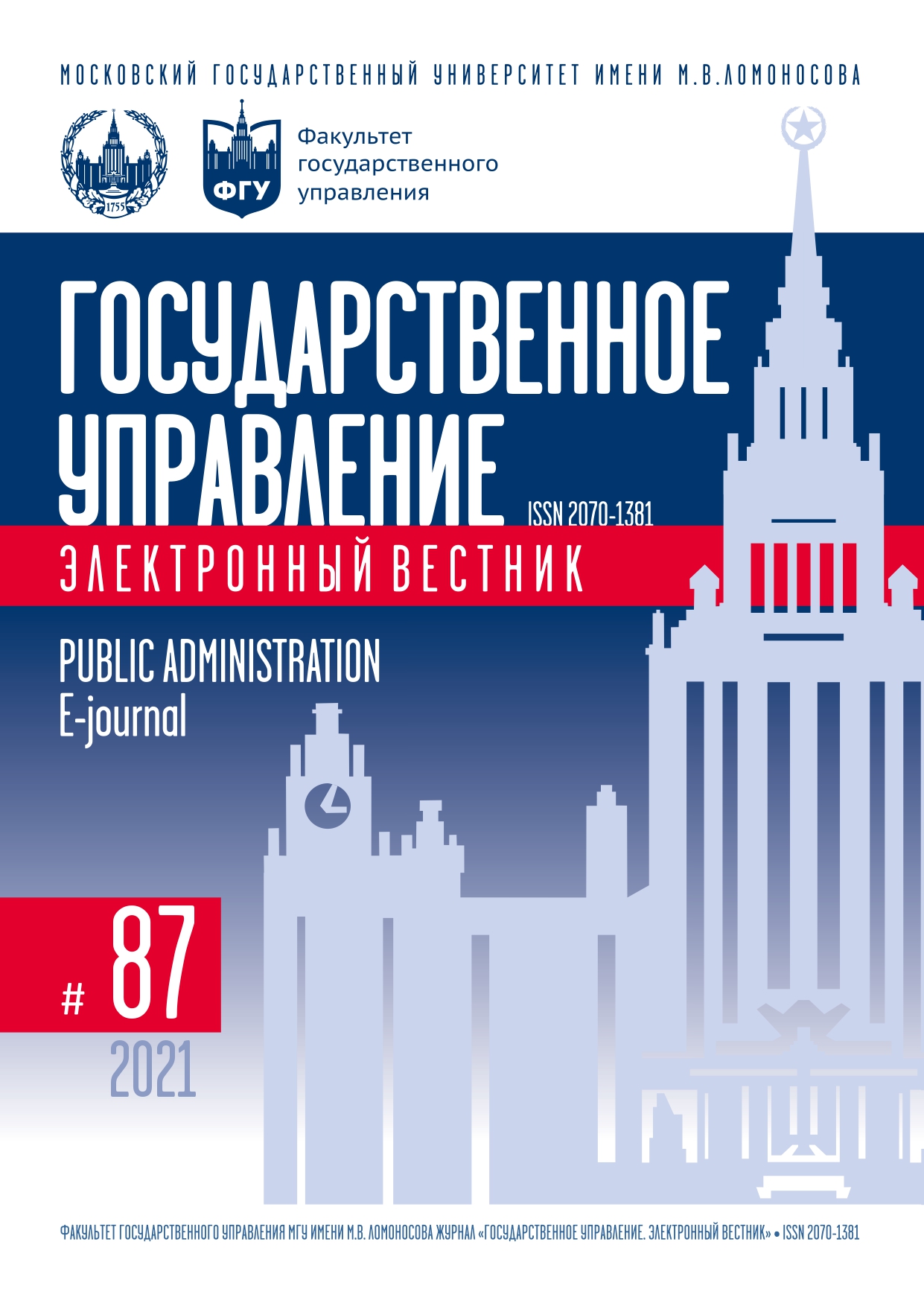Digital channels of Interaction between Government and Society: New Communication Practices and Technology Selection
Keywords:
Technologies, communication, digital channels, digital platforms, the fourth industrial revolution, social construction of technologies, co-construction of society and technologiesAbstract
The article analyzes the formation of new communication practices between society (citizens) and government on the basis of Internet resources. In considering this communication process, it is assumed that there is a gap between what technologies are conceived and how they are used. One of the reasons for this gap — the multi-subject nature of the digital space — is discussed in this article. Subjects of society, represented by the government, research, local communities and individuals in their own way see technologies, which goals to serve and through which digital channels it is more convenient to communicate in society. The article shows through which Internet resources the population prefers to express their opinion (Yandex.Maps, social networks, the State Services portal), and what technological tools are available to collect and analyze this data. It is noted that such practices of subjects can be characterized as a selection of technologies, which is carried out according to a number of criteria: ease of use, accessibility, level of trust in a particular resource. Trust is considered in the article as one of the most important resources of modern society; based on research data from the Edelman Trust Barometer, it is concluded that there is a crisis of trust today, which affects the interaction between people in the digital environment. Edwards’ idea of co-constructing society and technology is considered, which turns out to be key in this context, since it helps to bridge the gap between the theoretical concept of technology and its implementation, using in society
References
Латур Б. Наука в действии: следуя за учеными и инженерами внутри общества. СПб.: Издательство Европейского университета в Санкт-Петербурге, 2013.
Латур Б. Об интеробъективности // Социология вещей / Сборник статей под редакцией В. Вахштайна. М.: Издательский дом «Территория будущего», 2006. С. 169–198.
Маркеева А.В. Интернет вещей (IOT): возможности и угрозы для современных организаций // Общество: социология, психология, педагогика. 2016. № 2. С. 42–46.
Шваб К. Четвертая промышленная революция. М.: ООО «Издательство Э», 2017.
Яницкий О.Н. Четвертая научно-техническая революция и глубинные изменения процессов глобализации // Вестник Института социологии. 2017. № 21. С. 12–34. DOI: 10.19181/vis.2017.21.2.452.
Castells M. The Information Age: Economy, Society and Culture. Volume II: The Power of Identity. Malden, Mass.: Blackwell, 1997.
Edwards Paul N. Infrastructure and Modernity: Force, Time, and Social Organization in the History of Sociotechnical Systems. Modernity and Technology. Cambridge, Massachusetts, London, England: MIT Press, 2002.
Edwards Paul N. The Closed World: Computers and the Politics of Discourse in Cold War America. Cambridge, Massachusetts, London, England: MIT Press, 1996.
How Users Matter: The Co-Construction of Users and Technology / ed. by N. Oudshoorn, T.J. Pinch. Cambridge, Massachusetts: MIT Press, 2003.
In Athena’s Camp: Preparing for Conflict in the Information Age / ed. by J. Arquilla, D. Ronfeldt. Santa Monica, Calif: RAND, 1997. DOI: https://doi.org/10.7249/MR880.
Mihalcea R., Tarau P. TextRank: Bringing Order into Text // Proceedings of the 2004 Conference on Empirical Methods in Natural Language Processing. Barcelona, Spain: Association for Computational Linguistics, 2004. P. 404–411.
Pinch Trevor J., Bijker Wiebe E. The Social Construction of Facts and Artefacts: Or How the Sociology of Science and the Sociology of Technology Might Benefit Each Other // Social Studies of Science. 1984. No. 3. P. 399–441.
DOI: https://doi.org/10.1177/030631284014003004.
The Social Construction of Technological Systems: New Directions in the Sociology and History of Technology / ed. by W.E. Bijker, T.P. Hughes, T.J. Pinch. Cambridge, MA: MIT Press, 1987.
Woolgar S. The Turn to Technology in Social Studies of Science // Science, Technology and Human Values. 1991. Vol. 16. No. 1. P. 20–50. DOI: https://doi.org/10.1177/016224399101600102.

